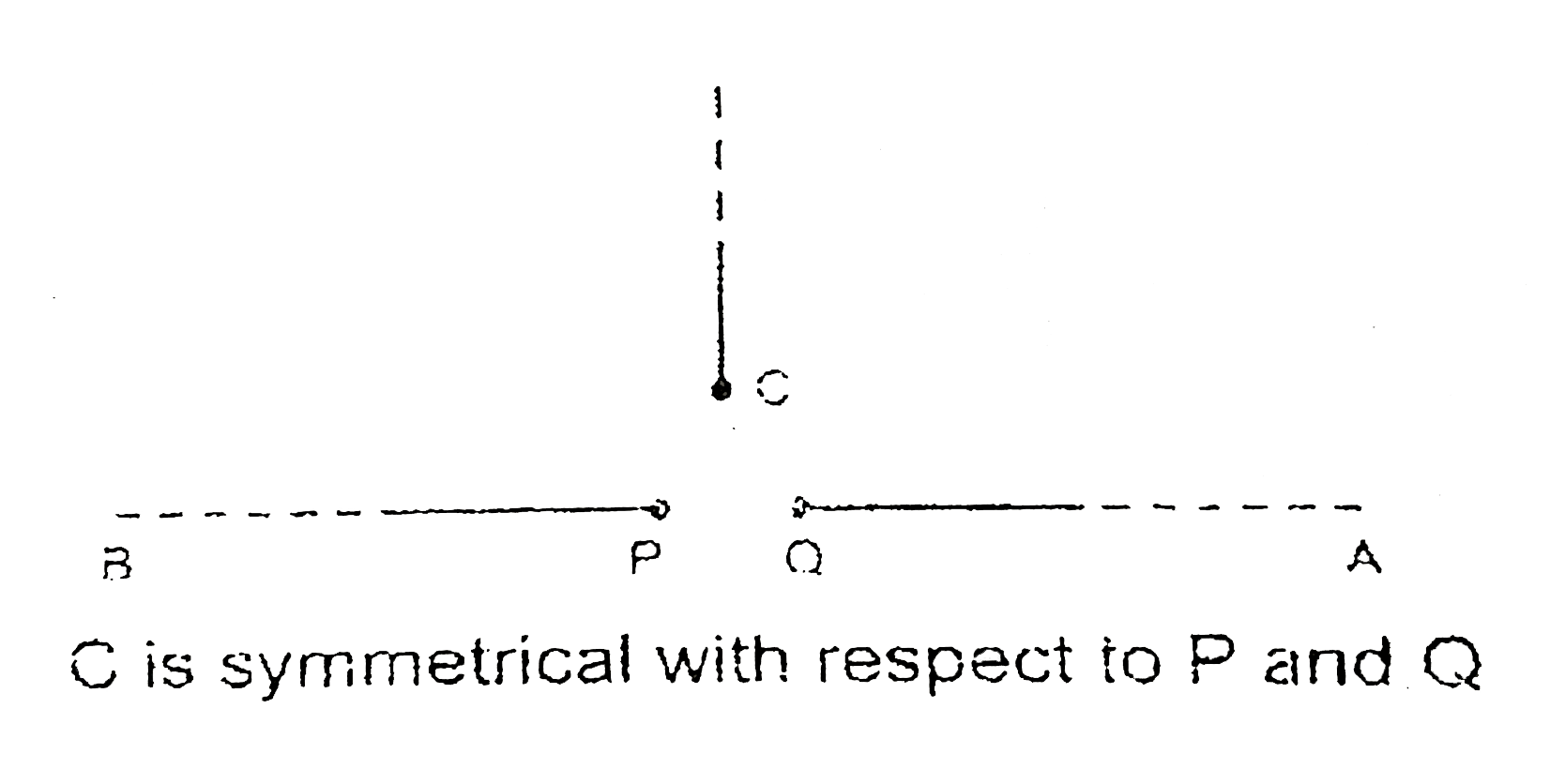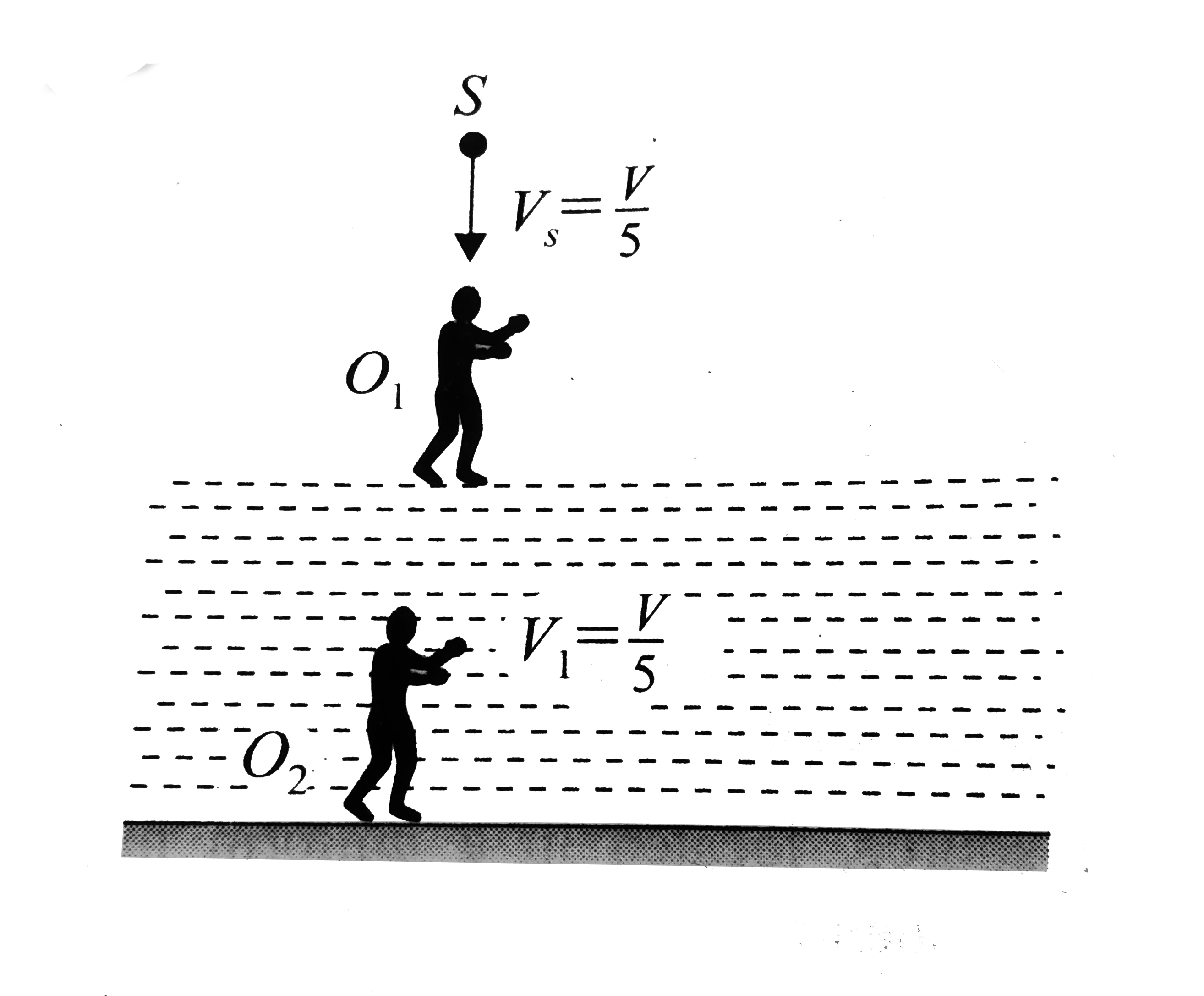Complete Solutions to Exercise- 2 PART - III of chapter SOUND WAVES of Class 11 book with complete answers and questions
| Class 11 | PHYSICS |
| Chapter | SOUND WAVES |
| RESONANCE | Exercise- 2 PART - III |
| Number Of Questions | 19 |
| Academic Year | 2023-24 |
In a wave motion `y = asin (kx - omega t),y` can represent :-
View SolutionWhich one of the following statements is incorrect for stable interference to occur between two waves?
View Solution`S_(1)` and `S_(2)` are two sources of sound etmitting sine waves. The two sources are in phase. The sound emitted by the two sources interfere at point F. The waves of wavelength

View SolutionTwo monochromatic sources of electomagnetic wave, `P` and `Q` emit waves of wavelength `lambda = 20 m` and separted by `5m` as shown. `A,B` and `C` are three points where interference of these waves is observed. If phase of a wave generated by `P` is ahead of wave generated by `Q` by `pi//2` then (given intensity of both waves is `l`) :

View SolutionAs a wave propagates
View SolutionA cylinderical tube, open at one end and closed at the other, is in acoustic unison (resonance) with an external source of sound of singal frequency held at the open end of the tube, in its fundamental note.
Then :
A. the displacement wave from the source gets reflected with a phase change of `pi` at the closed end
B. the pressrue wave from the source get reflected without a phase change at the closed end
C. the wave reflected from the closed and again gets reflected at the open end
D. the wave reflected from the closed end does not suffer reflection at the open end
View SolutionThe effect of making a hole exactly at `(1//3^(rd))` of the length of the pipe from its closed end is such that :
View SolutionIt is desired to increse the fundamental resonance frequency in a tube which is closed at one end. This can be achieved by
View SolutionIn a resonance tube experiment, a closed organ pipe of diameter 10 cm and of length 120 cm resonates, when tuned with a tuning fork of frequency 340 Hz. If water is poured into the pipe, then (speed of sound in air `340ms^(-1)`).
View SolutionTwo narrow organ pipes, one open (length `l_(1)`) and the other cloed (length `l_(2)`) are sounded in their respective fundamental modes. The beat frequency heard is `5 Hz`. If now the pipes are sounded in their first overtones, then also the beat frequency heard is `5 Hz`. Then:
View SolutionTwo identical straight wires are stretched so as to products `6 beats// s` when vibrating simultaneously. On changing the tension slightly in one of them, the beat frequency remains unchanged. Denoting by , `T_(1)` the higher and `T_(2)` the lower, initial tensions in the strings, then it could be said that that while making the above changes in tension
View SolutionA source and an observer are at rest `w.r.t` ground. Which of the following quantities will remain same, if wind blows from source to oberserver ?
View SolutionA girl stops singing a pure note. She is surprised to hear an echo of higher frequency, i.e., a higher musical pitch. Then :
A. there could be some warm air between the girl and the reflecting surface
B. there could be two identical fixed reflecting surfaces, one half a wavelengths of the sound wave away from the other
C. the girl could be moving towards a fixed reflector
D. the reflector could be moving towards the girl
View SolutionA sound wave of frequency `f` travels horizontally to the right . It is teflected from a larger vertical plane surface moving to left with a speed `v`. the speed of sound in medium is `c`
(a) The number of waves striking the surface per second is `f(c + upsilon)/(c)`
(b) The wavelength of reflected wave is `(c(c-upsilon))/(f(c+upsilon))`
(c) The frequency of the reflected wave is ` f((c+upsilon))/((c+upsilon))`
(d) The number of beats heard by a stationary listener to the left of the reflecting surface is `(upsilon f)/(c - upsilon)`
View Solution
In the figure shown, an observer `O_1` floats (static) on water surface with ears in air while another observer `O_2` is moving upwards with constant velocity `V_1=(V)/(5)` in water. The source moves down with constant velocity `V_S=(V)/(5)` and emits sound of freqeuncy `f`. The velocity of sound in air is `V` and that in water is `4V`. For the situation shown in figure.
View SolutionA tuning fork is vibrate with constant frequency and amplitude. If the air is heated without changing pressure the following quantities will increase.
View SolutionTwo sound waves moves in the same direction in the same medium. The pressure amplutides of the waves are equal but the wavelength of the first wave is double the second. Let the average power transmitted across a cross section by the first wave be `P_1` and that by the second wave be `P_2` then.
View SolutionTwo tuning forks, A and B, produce notes of frequencies 258 Hz and 262 Hz. An unknown note sounded with A produces certain beats. When the same note is sounded with B, the beat frequency gets doubled. The unknown frequency is
View SolutionA source and an observer are at rest `w.r.t` ground. Which of the following quantities will remain same, if wind blows from source to oberserver ?
View Solution
Exercise- 2 PART - III questions and complete solutions for chapter SOUND WAVES of RESONANCE ENGLISH of Class 11